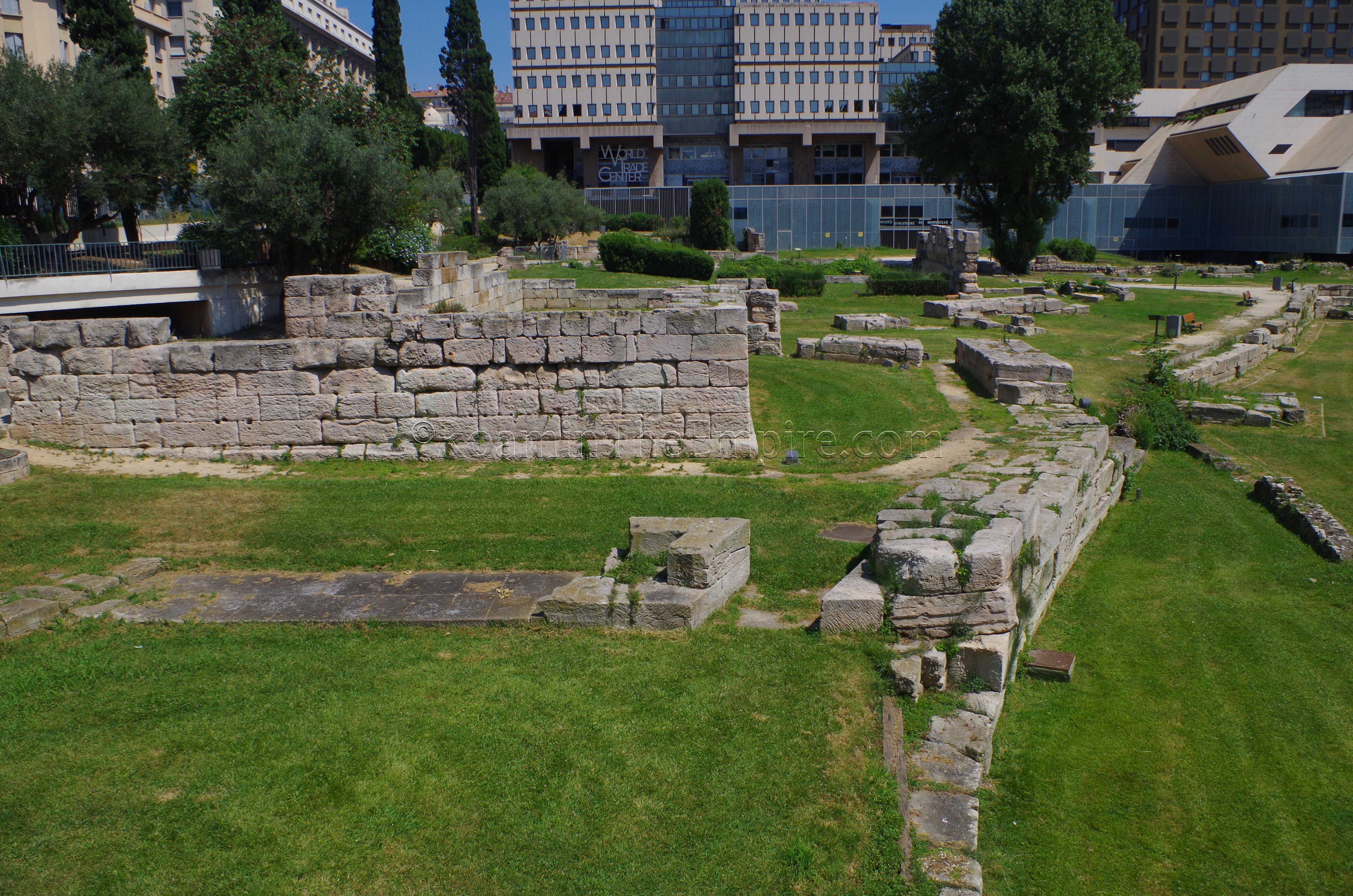
Most Recent Visit: June 2018
The forerunner to the current second largest city in France, Marseille, was the important ancient city of Massalia. Massalia was the oldest Greek colony in Gaul, founded in 600 BCE by Greeks from Phocaea. According to Thucydides, this was opposed by the Carthaginians, who were subsequently defeated in a naval engagement with the Phocaeans. A second wave of settlers followed in 540 BCE after Phocaea was destroyed by the Persians. Massalia was quite prosperous trading in precious metals through the 6th century BCE and established several settlements along the coast and inland. Increasing Carthaginian influence cut into the trade of Massalia somewhat, but by facilitating trade between the interior of Gaul, and later further northern environs, Massalia remained a relevant and powerful trade hub.
Relations grew between Massalia and Rome, particularly in the aftermath of the First Punic War and Carthage’s expansion in Hispania. By the time the Second Punic War broke out in 218 BCE, Massalia was a staunch ally of Rome. It was, in part, the influence of Massalia that prompted the Romans to sign the treaty with Carthage in 226 BCE establishing the Ebro as the northern limit of Carthaginian influence. It was also possibly Massalia’s relationship with Saguntum that influenced the Romans to offer protection to that city, the siege of which was the precipitating event of the Second Punic War. During the war, Massalia provided the base for Cornelius Scipio Calvus and Publius Cornelius Scipio to land and begin their campaign against the Carthaginians in Hispania. Massalia also provided ships during the Roman victory at the Battle of the Ebro.
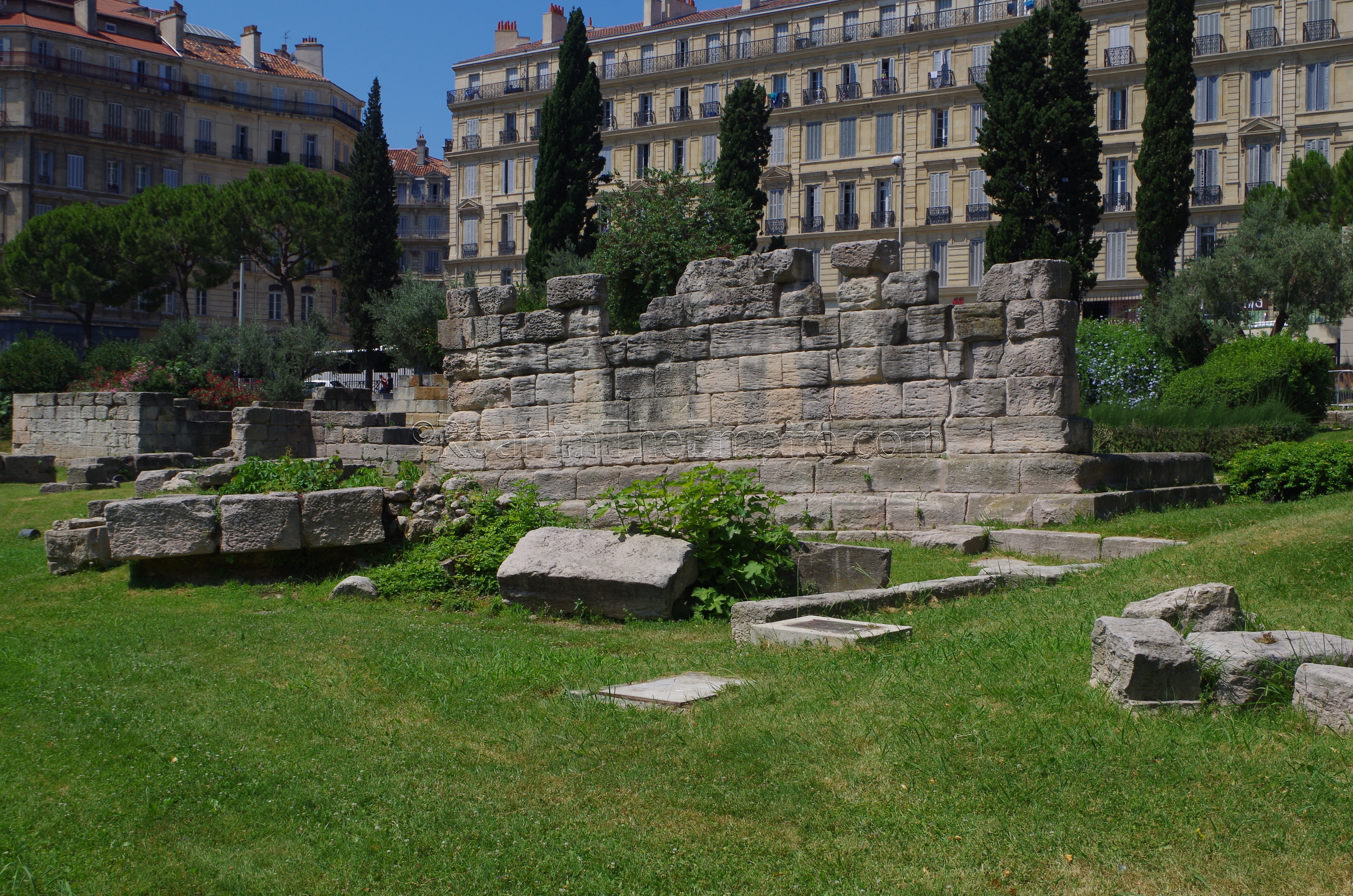
In 123 BCE, under threat from the Allobroges and Averni tribes, Massalia called on Rome for assistance, which eventually brought Roman hegemony to southern Gaul. Massalia, though, was allowed to remain an independent city-state with a significant trade empire. That largely came to an end after Massalia backed Pompey during Caesar’s Civil War in 49 BCE. After closing their gates to Caesar, he laid siege to Massalia for four and a half months before the city surrendered. Caesar allowed the city to remain somewhat autonomous after its defeat, but confiscated all of the Massiliot holdings beyond the city.
Getting There:
Marseille is the second largest city in France, and as such, it is well-connected to the rest of the country by bus, train, and air. There is an international airport outside of town that is connected to the city center by bus and rail. Marseille is notoriously bad for parking and driving, so I was hesitant to take my rental car into the city; not to mention the rates for parking garages were quite high. Instead I parked in an economy lot at the Aéroport Marseille Provence for just a few Euros, and took a bus into Gare de Marseille-Saint-Charles, the main train station. Trains are also available from the airport to Saint-Charles. It was much cheaper than parking in the city or taking the train all the way from Avignon and saved me the hassle of driving and parking in Marseille.
Musée d’Archéologie Méditerranéenne
For such a large and important city in antiquity, the remains of ancient Massalia are rather scant. This, of course, is probably largely due to how important a city it remained through the years, and the constant building an improvement necessary to maintain that status. As one might expect, most of the remains are clustered around the Vieux-Port, the old port. The first site worth visiting is the Musée d’Archéologie Méditerranéenne. Housed in an old hospital, the museum is located at 2 Rue de la Charité. The museum is open Tuesday to Sunday from 10:00 to 18:00. It is closed on Mondays. Entrance costs 6 Euros.
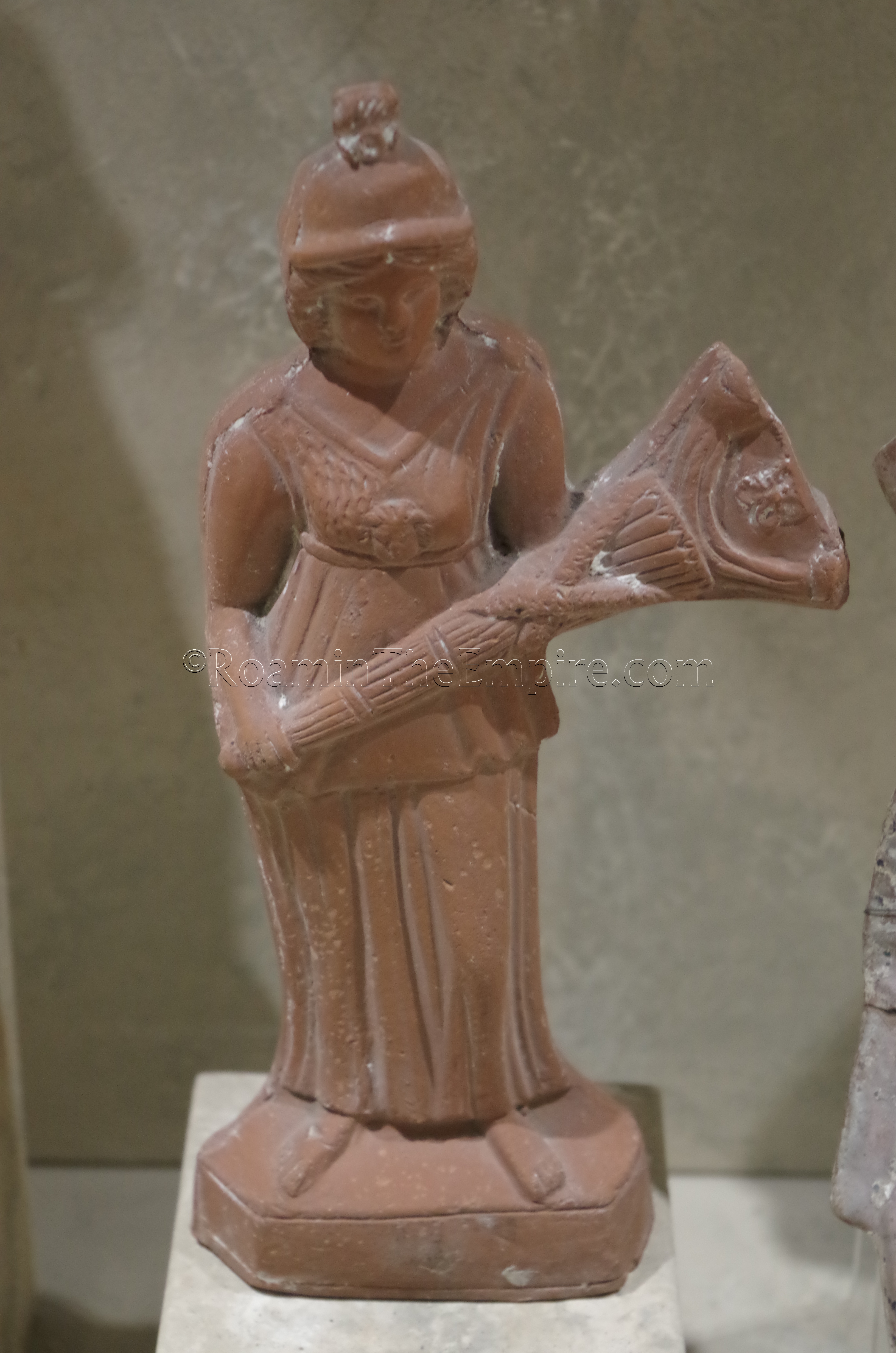
When I visited, most of the ancient collection was closed; only the Egyptian collection (as well as contemporary African/South American/Asian collections) was open. What was quite frustrating was that this was not noted when purchasing a ticket, and there was no reduction in price despite more than half the collection of the museum being inaccessible. Granted, the Egyptian collection was nice; it’s apparently the most important collection of Egyptian antiquities in France behind that in the Louvre. There are a number of objects from the Roman period in Egypt, among others, including a few Greco-Roman Isis statuettes synchretized with Athena and Aphrodite. There are also some nice sarcophagi and painted stele dating to other periods as well. It is not an especially large collection, however, and it took me just a half an hour to get through it.
A few blocks away at about 2 Rue des Martégales is a school, and on the grounds of this school are the remains of the Greek style theater built in the 1st century CE. A theater like structure in front of the school is plainly visible from satellite imagery and from outside the school, but among this are apparently original remains from the theater. Given that it is on the grounds of a school, visiting it is not really possible. It’s hard to see anything from outside, and school was in session when I visited, so I opted not to take any pictures (or really look that closely, for that matter).
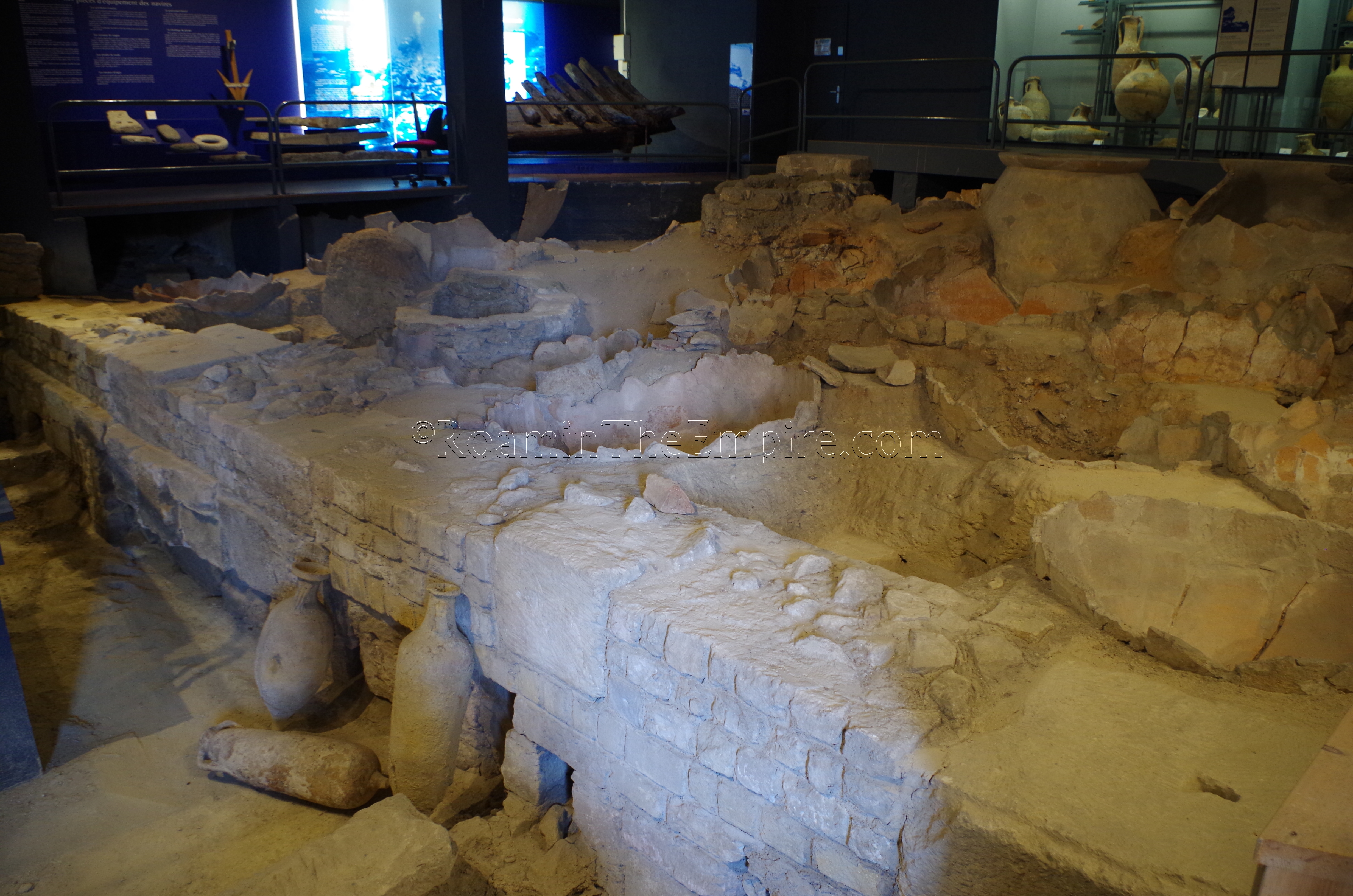
Musée des Docks Romains
About a 5 minute walk from there, at 28 Place Vivaux, is the Musée des Docks Romains. The museum is open Tuesday to Sunday from 9:30 to 18:00. It is closed on Mondays. Like all the museums in Marseille, it has a standard 6 Euro entrance free. A combination ticket with the Musee d’Histoire de Marseille, however, is available for the same price. I’m not sure if a single entrance to the Musée des Docks Romains is even possible without the combination, but given it’s the same cost as the standard single entrance to either museum, there’s no reason not to get it.
The Musée des Docks Romains centers on part of a horreum near the Roman docks of Massalia. Built about the middle of the 1st century CE, what remains features a number of in-situ dolia that were half buried in the floor of the warehouse. Evidence of a second level was found during excavations. The building seems to have been in use until the 4th century CE, when it was destroyed in a fire. The collection in the museum focuses on finds from the excavations, but mainly with other maritime related objects; items found in shipwrecks or associated with seafaring trade such as anchors and amphorae. There is also part of the keel of a shipwreck on display, as well as a few objects not associated directly with maritime activity, such as a mosaic of a bather. The museum is not very large, it took me less than half an hour to go through, and there is no information in English.
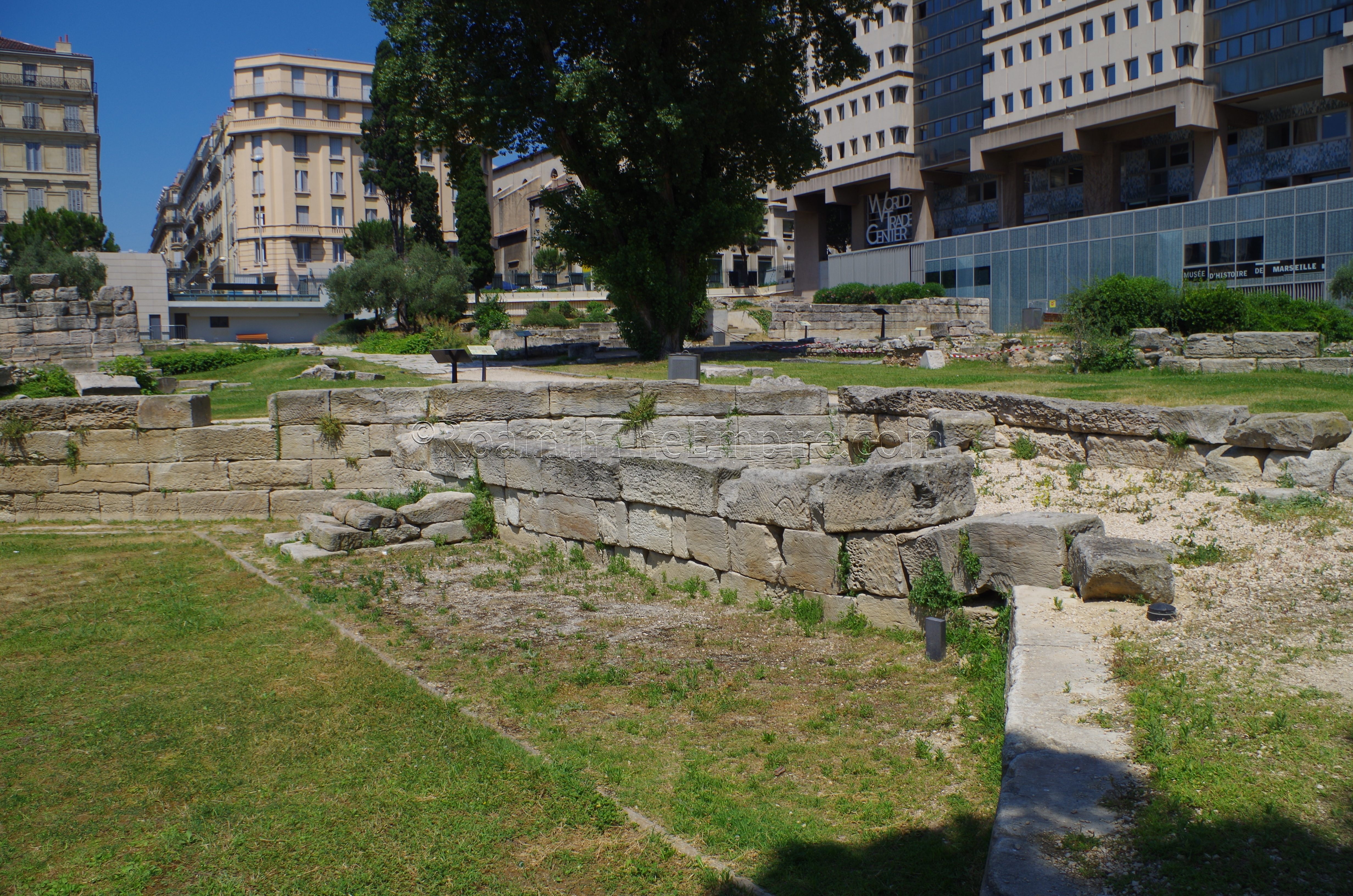
Musee d’Histoire de Marseille
A few blocks to the east at 2 Rue Henri Barbusse is the Musee d’Histoire de Marseille and the adjacent Jardin des Vestiges. While the latter can be seen somewhat from the outside, access is part of the museum entrance, and so one must purchase entrance to the museum to visit. The museum is open from Tuesday to Sunday between 9:30 and 18:00. It is closed on Mondays. Entrance is 6 Euros, but can be visited with a combination ticket from the Musée des Docks Romains. There are additional fees for temporary exhibitions.
The Jardin des Vestiges contains various remains associated with a harbor area of Massalia. The harbor constructions present date to the Flavian period. Found in this section of the harbor was a 3rd century CE shipwreck, which is on display in the museum. There are some remnants of both Greek and Hellenistic fortifications on the west side of the archaeological area with a surviving stretch of 2nd-1st century BCE road running through the Hellenistic gate. The area on the north side of the garden contains a jumble of remains dating back as far as the 4th century BCE up through the Late Antique, even with some more modern constructions thrown in for good measure. Among the remains here are a Hellenistic sewer and two Roman aqueduct courses dating to the Augustan age and 2nd century CE. A large freshwater pool, used to supply water to ships, in the eastern section dates to the 1st-2nd century CE. A thorough visit to the archaeological area would take about 20-30 minutes.
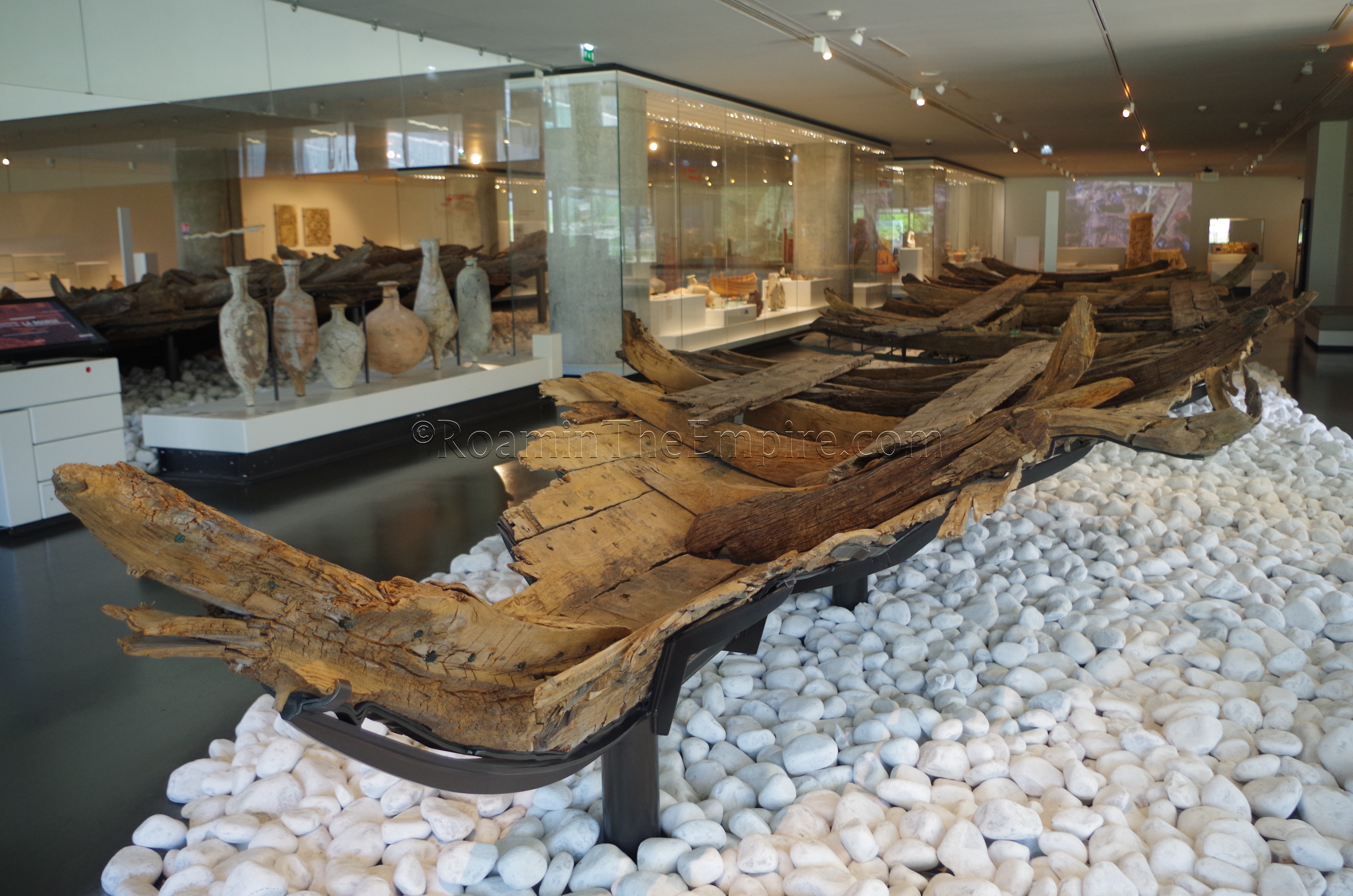
The museum itself has quite a nice collection. There are a number of large fragments of shipwrecks found in the area, dating back to as early as the 6th century BCE on display. Other highlights of the collection include catapult projectiles dating to Caesar’s siege of Massalia and skulls with metal fittings attached that were used in Gallic trophies. There are a number of inscriptions and fragments of statues, as one might expect, but also some wooden objects and leather footwear, which is among the more uncommon things seen in this museum. The museum does a great job covering the Greek and Roman periods of the city on the ground floor. Upstairs there is a collection that extends into later periods of the city’s life.
Just the ancient part of the collection took me about an hour to go through. Again, there wasn’t much in the way of information in any other language than French, so not being able to read anything in detail sped up the pace a little bit. The combination of the museum and the Garden des Vestiges easily makes this the most interesting and fruitful stop in Marseille as far as ancient archaeology is concerned.
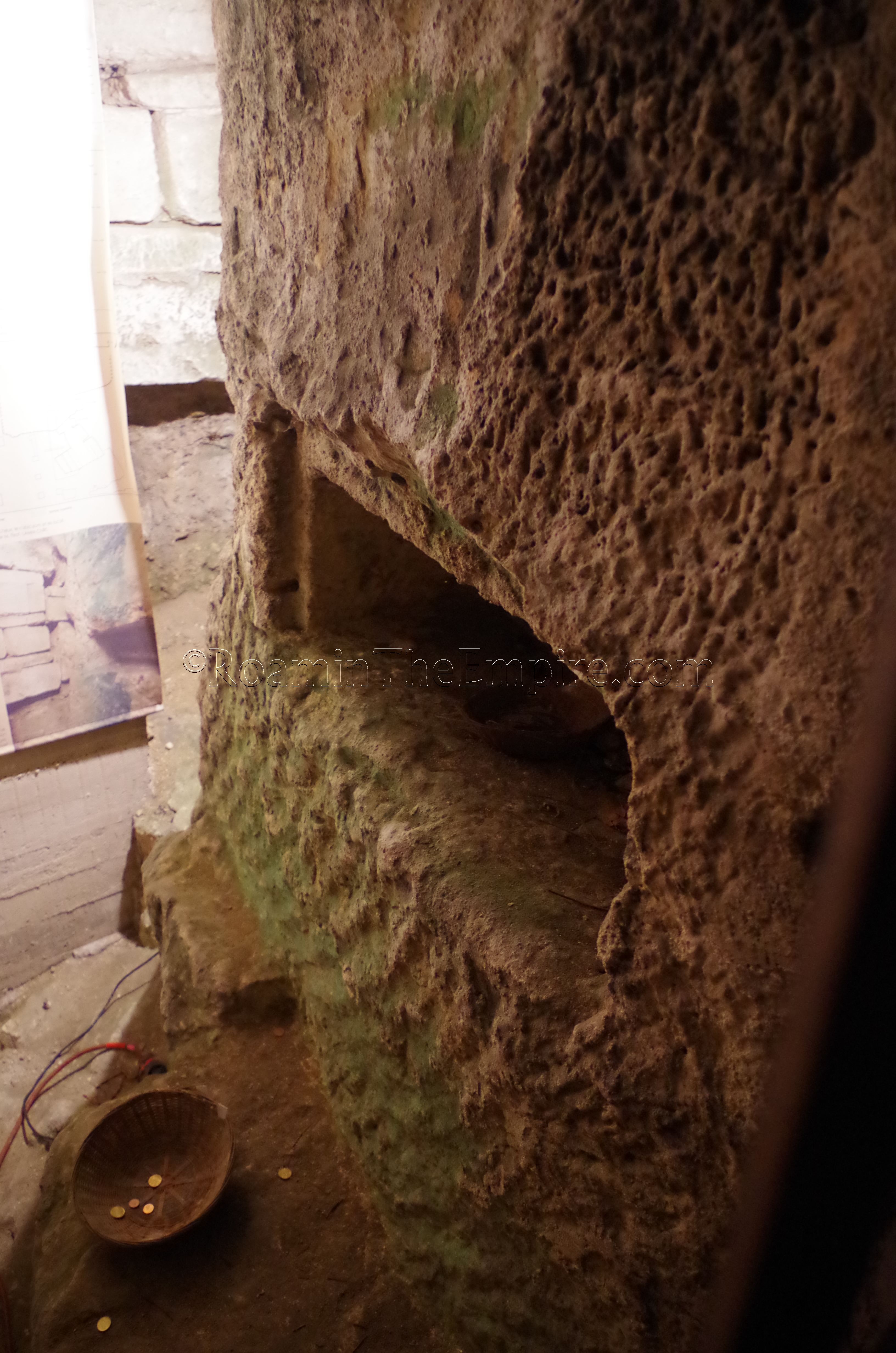
Abbaye Saint-Victor
The last stop is a bit of a hike up from the harbor to the Abbaye Saint-Victor on the south side of old port. Located at Place Saint-Victor (about 150 Rue Sainte), the church is open every day from 9:00 to 19:00. The basilica is free to visit, but entrance to the crypts is 2 Euros. The crypt of the Abbaye Saint-Victor was the location of a paleo-Christian necropolis dating to the mid-4th century CE. The necropolis, in turn, made use of an earlier Greek quarry. A shrine, and later the church sprang up as a result of the necropolis being here. A number of earlier sarcophagi and funerary inscriptions were found in the necropolis, some dating back to the 2nd century CE and currently on display in the crypt. The crypt has undergone so many reconstructions and refurbishments as the church has grown over the centuries, there’s only a few places where the original 5th-6th century burial chambers can be seen, and I didn’t really see anyplace that looked to be part of the original quarry. I only spent about 10 minutes here, and while it’s interesting, if one doesn’t fancy a walk up the hill, it’s not something I would categorize as a high priority to see.
Other than the Musee d’Histoire de Marseille and the Jardin de Vestiges, I wasn’t particularly impressed with what Marseille had to offer as far as the remains of its ancient past. I spent a total of about 7 hours in the city, and that included miscellaneous wanderings not necessarily related to seeing the above sites. If one focuses on those, they could easily be seen in half that time. As it was, I still had time to get back to my vehicle and see a few other things in the area around Marseille.
Sources:
Bromwich, James. The Roman Remains of Southern France: A Guidebook. London: Routledge, 1996.
Caesar, Julius. Bellum Civile, 1.33-36, 1.56-58, 2.1-7, 2.14-18, 2.21-22.
Isocrates, Archidamus, 6.84.
Livy, Ab Urbe Condita, 21.26.
Stillwell, Richard, William L. MacDonald, and Marian Holland. McAllister. The Princeton Encyclopedia of Classical Sites. Princeton, NJ: Princeton U Press, 1976.
Thucydides, Peloponnesian War, 1.13.6


